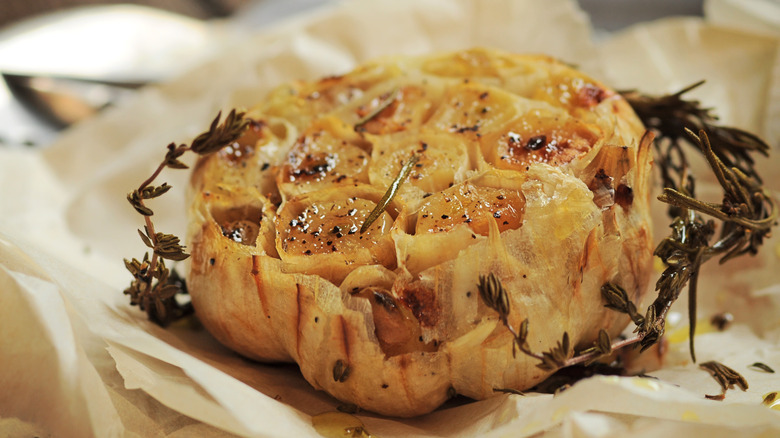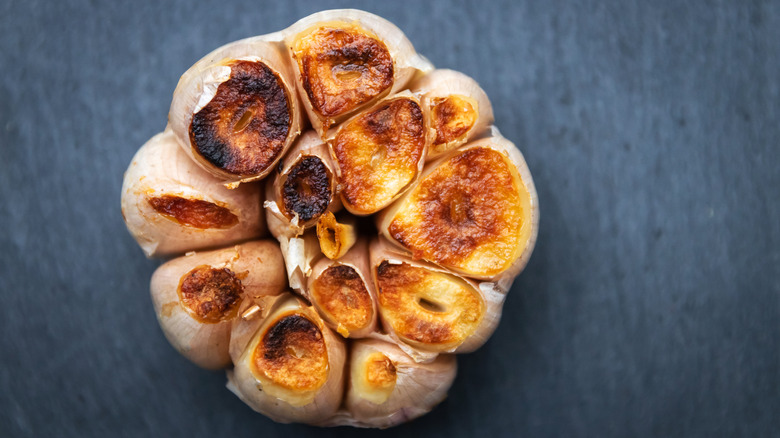The Temperature Danger Zone To Avoid When Roasting Garlic
A quick search on "how to roast garlic" will yield a litany of recipes, nearly all of which call for the oven to be preheated to 400 degrees Fahrenheit. But this temperature exceeds the danger zone for garlic. At this heat, your chances of ending up with a burnt or uneven roast are increased, even if the bulb is protected by foil. So, what's to be done?
A good rule of thumb is to roast your garlic at a lower temperature, either at or below 375 degrees Fahrenheit. It may not seem like much, but the 25 degrees between 375 and 400 can be the difference between beautifully roasted garlic and a burnt mess. Higher oven temperatures can cause the outer edges of the exposed garlic cloves to burn before the middles have time to soften, leaving you with a roast of uneven cloves, where the outsides are crispy and overcooked but the middle is still raw.
Much the same as keeping the heat lower on the stovetop so as not to burn minced garlic, lower oven temps are roasted garlic's best friend. It may take a little longer to cook, but your patience will be rewarded.
A good way to roast garlic
It doesn't take much to make great roasted garlic. All you need is garlic, olive oil, salt, pepper, and any other herbs and spices you might like. Prepping the garlic for roasting begins by slicing about a half inch off of the pointy end of the bulb. Drizzle the olive oil over the exposed cloves and season with salt and pepper. Wrap the seasoned bulb in a cocoon of aluminum foil, and roast it in a preheated, 375-degree Fahrenheit oven for 45 minutes. The result will be a totally transformed ingredient, one that's got a deep, creamy, rich flavor, and makes a great addition to a variety of different dishes.
Of course, there are many other ways to roast garlic. If you have an air fryer, set it to 350 degrees Fahrenheit and roast the garlic for 40 minutes. The cloves will be a little on the crispy side, but they will still maintain that great roasted garlic flavor. You could also separate and peel the cloves, and cook them over very low heat in an olive oil bath over the stovetop. However, you do run a higher risk of burning the cloves if you're not paying enough attention.
Though they yield different results, each of these methods benefits from lower temperatures that coax out the flavors of the garlic instead of burning it prematurely. Slow and steady wins the race.

